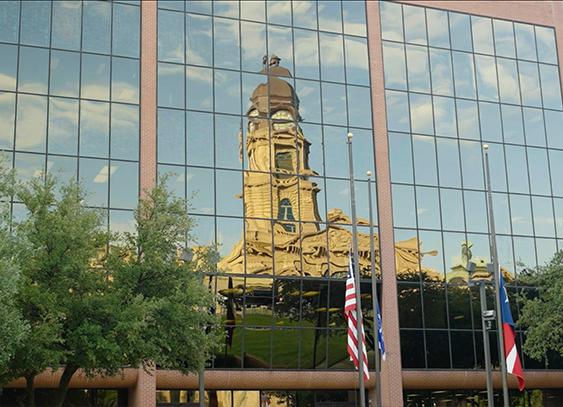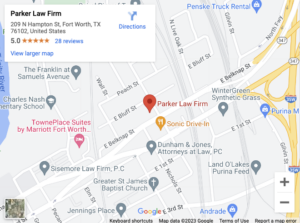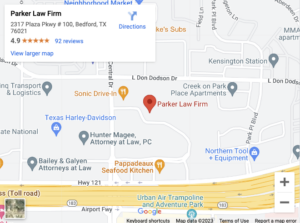
The back plays an essential role in standing, walking, and lifting. You often can’t even sit or lie down comfortably if you suffer from back pain. As a result, your back injury could disable you from working and enjoying hobbies.
The back contains many structures that can become damaged in an accident. Your back injury could range from a minor injury that heals in a few weeks to a severe injury that permanently disables you.
The Anatomy of Your Back

The back is a complex part of the body. Within it, a combination of bones and soft tissues provides support, strength, flexibility, and movement.
Your spine sits at the center of your back, both literally and metaphorically. The spine is composed of 24 individual vertebrae, which allows it to perform multiple functions.
When the vertebrae stack on top of each other, they form a stable column that supports your upper body and head. But these bones also have joints between them that allow you to bend and twist your trunk.
Your spine contains seven cervical vertebrae or neck bones. These support your head and protect your spinal cord as it passes from your skull to your spine.
Lower down, 12 thoracic vertebrae attach to your ribs, supporting your rib cage and helping to protect your spinal cord.
At the base of the spine, five large lumbar vertebrae sit just above your hips. They help transfer your body weight to your pelvis and legs.
There are discs between each pair of vertebrae. These discs have a tough outer ring called an annulus and a soft inner nucleus. They cushion the spine by absorbing shocks and prevent the vertebrae from crashing into each other. They also provide a smooth surface on which the vertebrae can move.
Your vertebrae are held together by ligaments, which also hold your ribs to your thoracic vertebrae.
Muscles and tendons overlie the skeleton. In your back, tendons anchor muscles to your spine, shoulder blades, skull, collarbones, and ribs.
How a Back Injury Happens
You can injure your back in a few ways, including:
Hyperextension Trauma
You hyperextend your back when it gets stretched beyond its normal capacity. Car accidents are a common cause of hyperextension. During a collision, your body bends and twists under the force of the crash. In the worst-case scenario, these forces can stretch or even tear the soft tissues.
Blunt Trauma
Blunt trauma happens when something impacts your back without piercing it. For example, when you fall from a height or slip and fall, your back strikes the ground. The impact can fracture bones and damage discs.
Penetrating Trauma
If an object pierces your back, you suffer penetrating trauma. Penetrating trauma can tear soft tissues. It could occur in motorcycle accidents when a car unseats you from your motorcycle and causes you to collide with a fence that tears into your back.
Back Injury Types and Examples
You can injure your back in many ways depending on the tissues that are damaged. Some of the most common back injuries include:
Back Strain
When you hyperextend a back muscle or tendon, you have back strain. A mild back strain might only involve muscles or tendons that were stretched more than usual. But if you tear a back muscle or tendon, you have a severe back strain.
Back strain can cause:
- Pain
- Swelling
- Weakness
- Stiffness
- Muscle spasms
Doctors rarely operate to repair a strained back. Instead, they’ll usually prescribe rest, ice, and anti-inflammatory medication. A strain will usually heal on its own within four to six weeks unless you suffer a full-thickness tear.
Sprained Back
You sprain your back when you hyperextend the ligaments holding your vertebrae together. When these ligaments stretch or tear, you might suffer from the following:
- Spine pain
- Joint inflammation
- Limited range of motion
- Bruising
As with back strain, doctors rarely operate on a sprained back. Home care, including rest, ice, and anti-inflammatory drugs, will help a sprain heal within four to six weeks.
Damaged Disc
When you whip back and forth in an accident, your vertebrae spread apart, then compress together. During compression, the vertebrae can be crushed, deforming the discs.
When a disc is squeezed so forcefully that the nucleus pushes out and protrudes through the annulus, the result is a herniated disc. When the disc collapses so that the sides of the annulus sag, you have a bulging disc.
In either case, the damaged disc can’t support or cushion the spine, which leaves your spine unstable. Worse yet, the protrusion presses on nerve roots that branch from the spinal cord.
The compression causes nerves to inflame and misfire. Nerve compression can cause:
- Pain
- Numbness
- Tingling
- Weakness
- Loss of dexterity
These symptoms will radiate into the limb connected to the nerve root. For example, nerve compression in your lower back can produce symptoms in one of your legs.
Fractured Vertebra
A fractured vertebra, also called a broken back, is the most serious back injury you can suffer. When you fracture a vertebra, the bone fragments can enter the spinal canal and sever the spinal cord.
A severed spinal cord can’t carry nerve signals. As a result, you might experience permanent paralysis below the injury.
Getting Compensation for a Back Injury
Back injuries are among the main reasons employees miss time from work. As such, accident victims who suffer back injuries often have significant economic losses due to lost wages. And since back injuries may require expensive surgery, victims could also incur high medical costs.
You can pursue injury compensation when someone else’s actions cause injury to your back. In most cases, you must prove that the other person’s negligent actions lead directly to your harm. Negligence simply means the person failed to exercise reasonable care.
If you’re able to prove negligence, you can recover compensation for your economic and non-economic damages. Economic losses include medical bills, lost wages, and other financial costs, while non-economic losses include the human cost of your injuries, such as pain, mental anguish, and disability.
Contact a Fort Worth Personal Injury Lawyer for Help
Back injuries can lead to incapacitating pain and weakness. Contact Parker Law Firm Injury Lawyers for a free consultation to discuss the compensation you can pursue for your injury. We’re standing by to help you.


